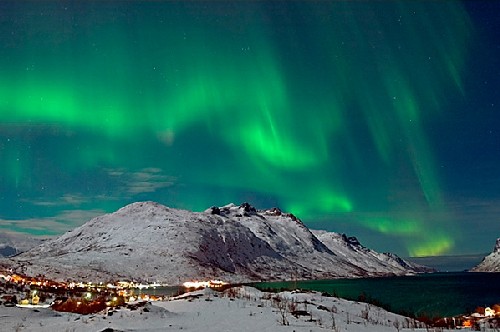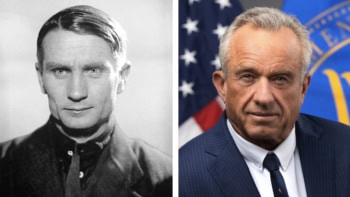
Aurora Borealis over Tromsø, Norway photo: Bjørn Jørgensen
By James Dacey
There are occasions during my reporting when I come across jobs that make me really quite envious…
Siobhan Logan, a writer in the UK, was given the opportunity to travel to northern Norway where she meet a group of auroral scientists and local reindeer herders, before documenting her adventures in writing and film.
Her work will feature as part of an upcoming show at the National Space Centre in Leicester that will feature poetry, physics and film inspired by Aurora Borealis, or the Northern Lights.
“For a writer, it was such an inspiring place. I was interested in the myths indigenous Arctic people have created about the Northern Lights but also what the scientists can tell us about the aurora. I came back with my head full of the creatures, characters and stories of the north,” says Logan of her experience.
The spectacular natural light displays of Aurora Borealis have always been a regular feature in the myth and folklore of northern peoples, like the Cree groups of northern America who describe this phenomenon as the “dance of the spirits”.
In recent years, the popular author Philip Pullman has brought the magic of auroras to a new generation of children through the His Dark Materials trilogy – a fantasy series tracking the adventures of bright young girl Lyra Belacqua as she passes through the aurora into a parallel universe.
Logan’s trip was made possible by sponsorship from the University of Leicester, which has strong links with a research base in Tromsø. This facility is owned by EISCAT – a project designed to study the interaction between the Sun and the Earth as revealed by disturbances in the magnetosphere and the ionised parts of the atmosphere.
Stan Cowley of the Radio & Space Plasma Physics Group at the University describes why he is excited by the project. “Science may tell us of the mechanisms of the auroras, but another language is required to express our reaction to the sight of flickering lights over frozen landscapes.”
The performance at the National Space Centre will takes place on February 23 at 7.30 pm – tickets are free but you need to book in advance.



